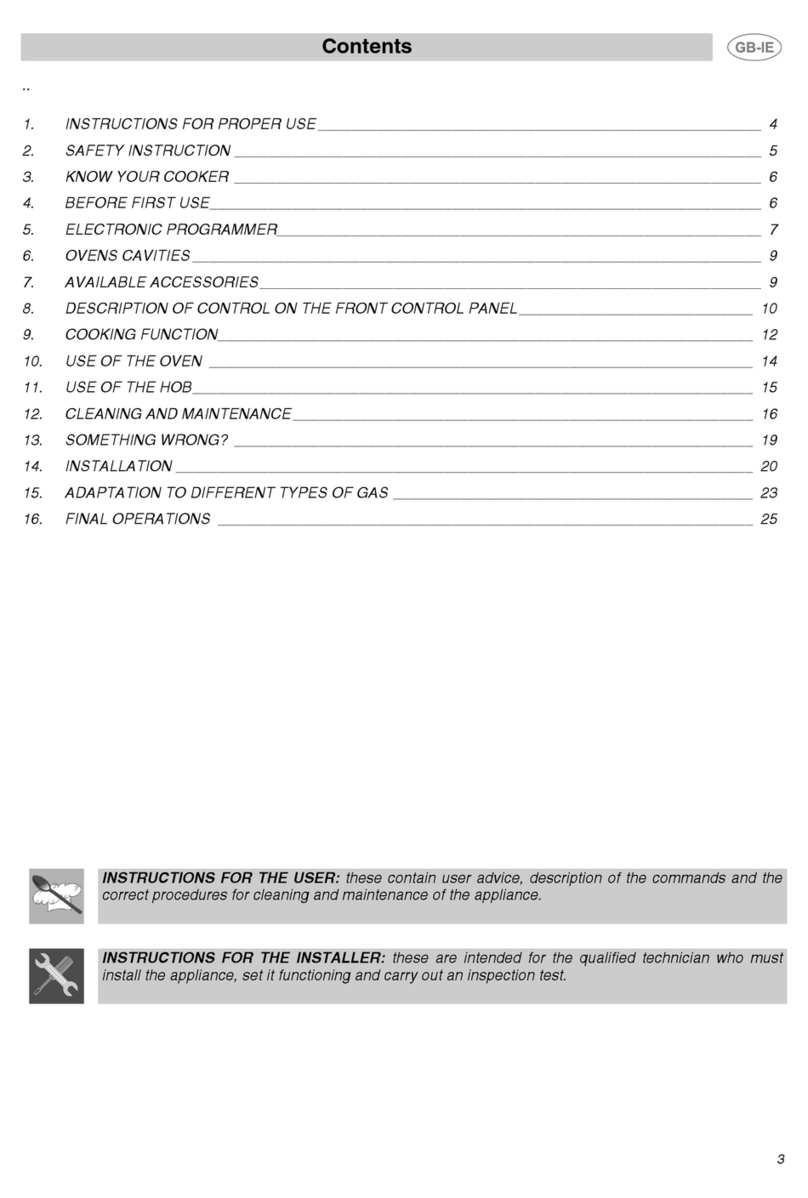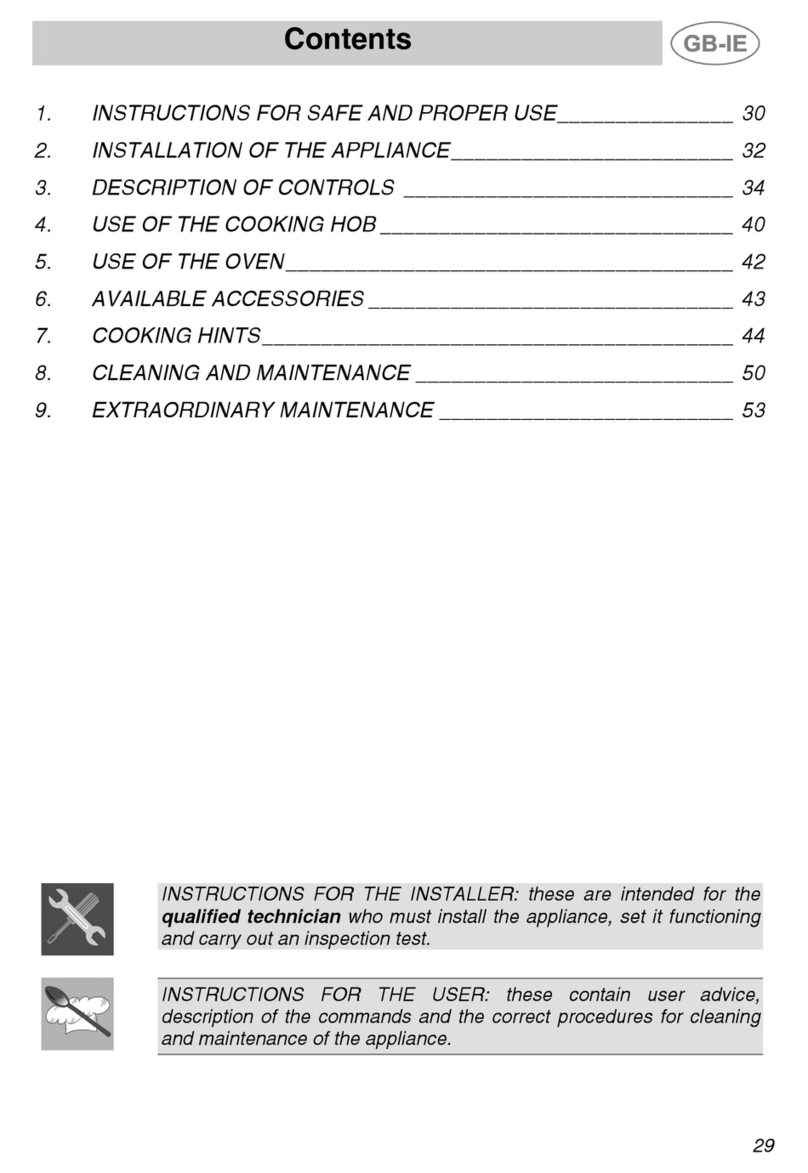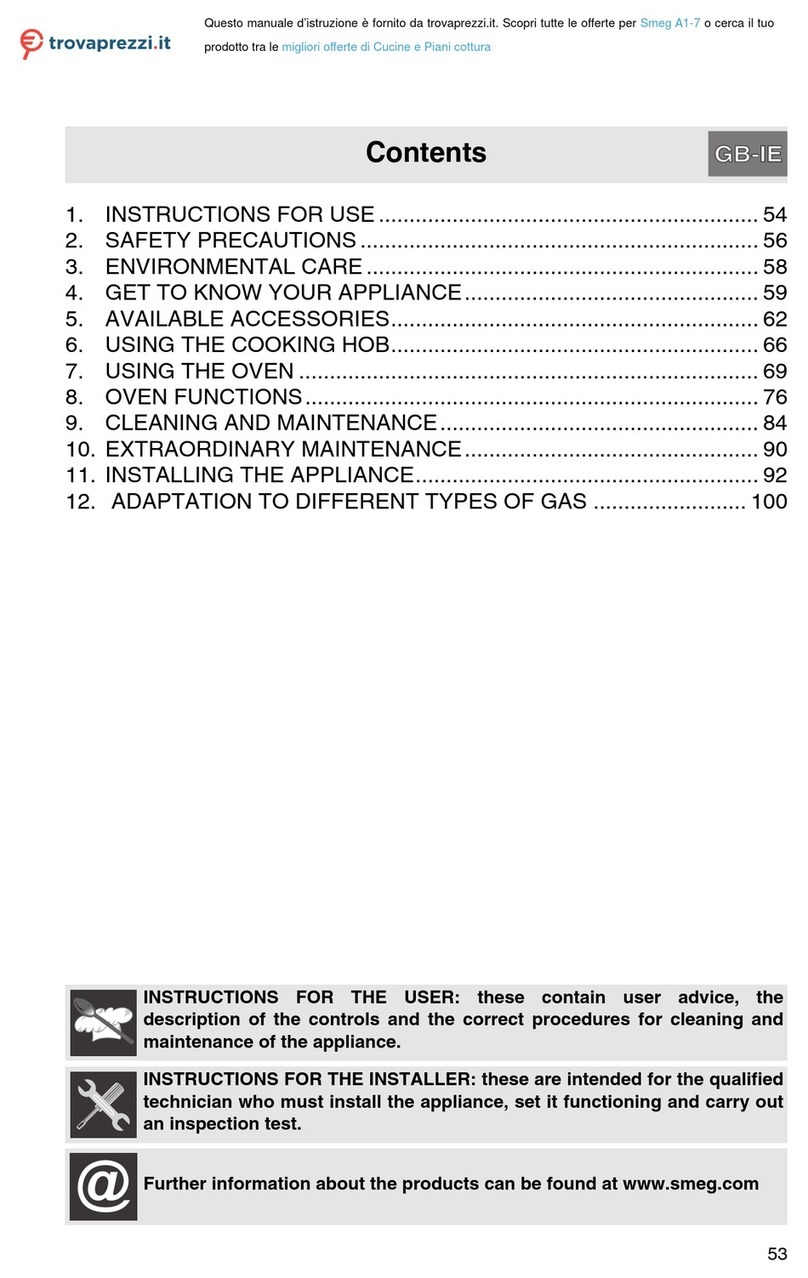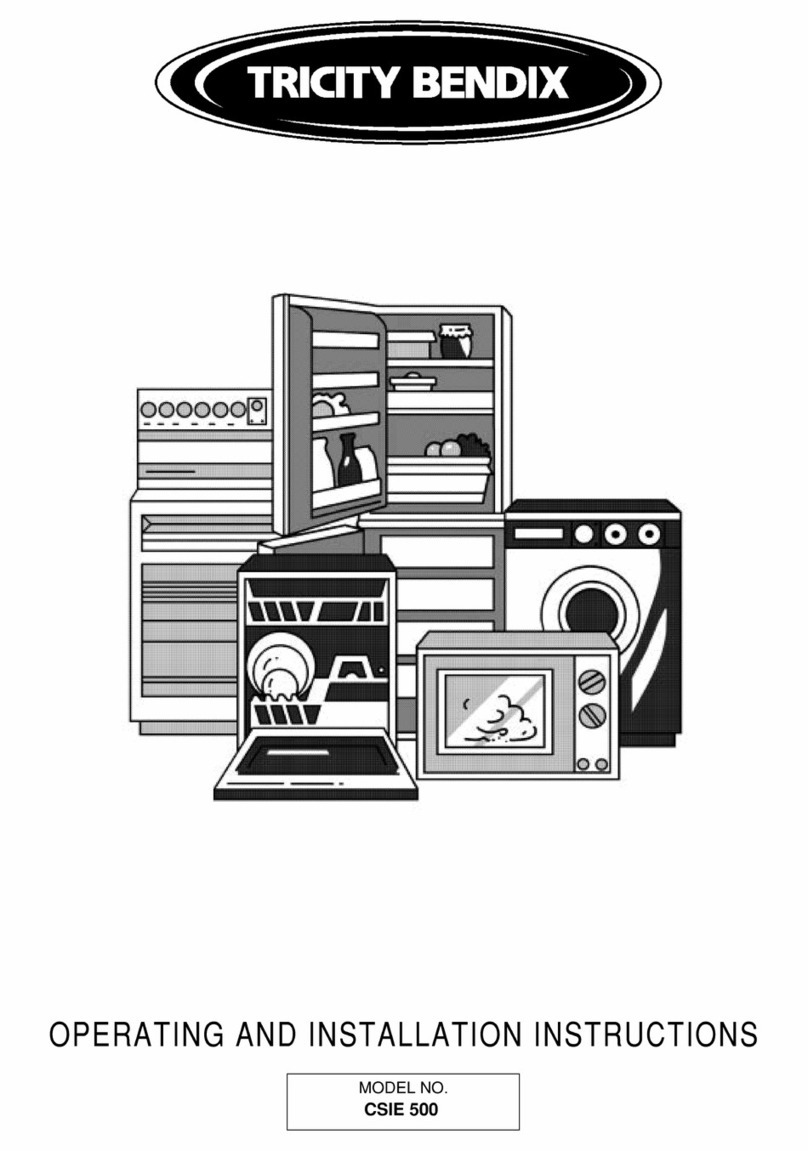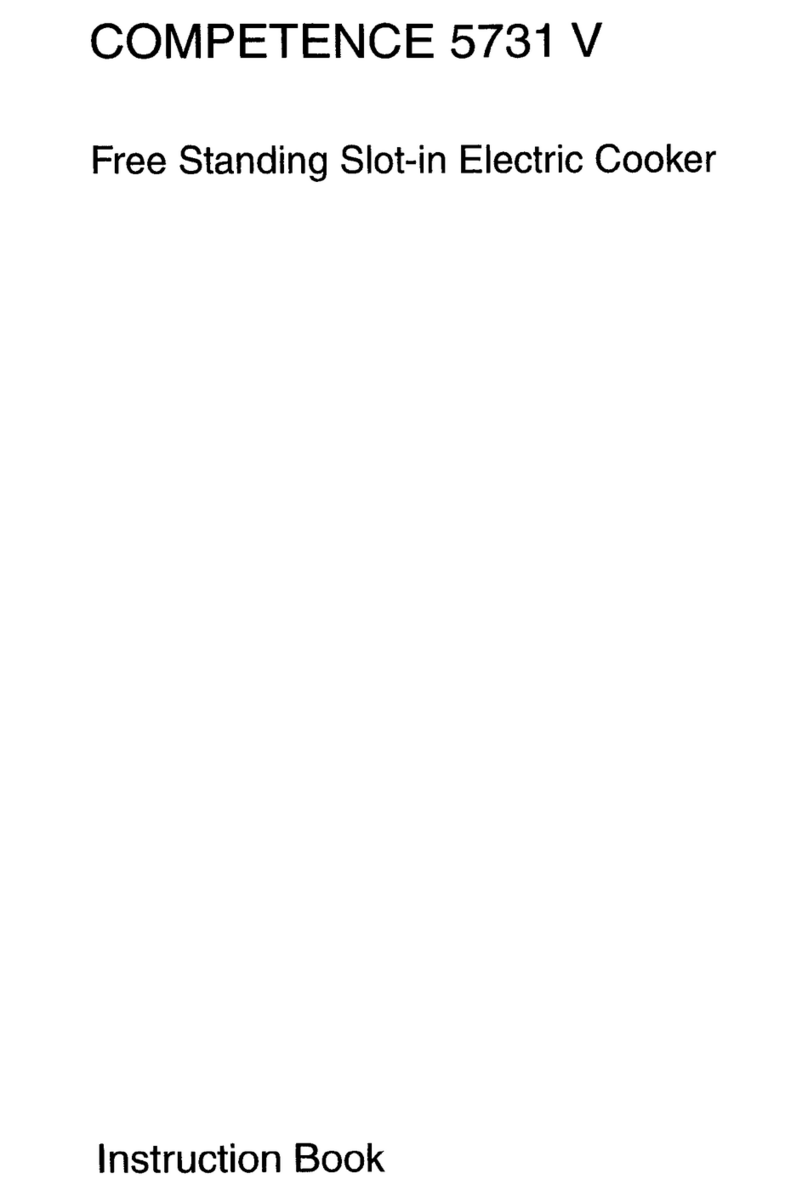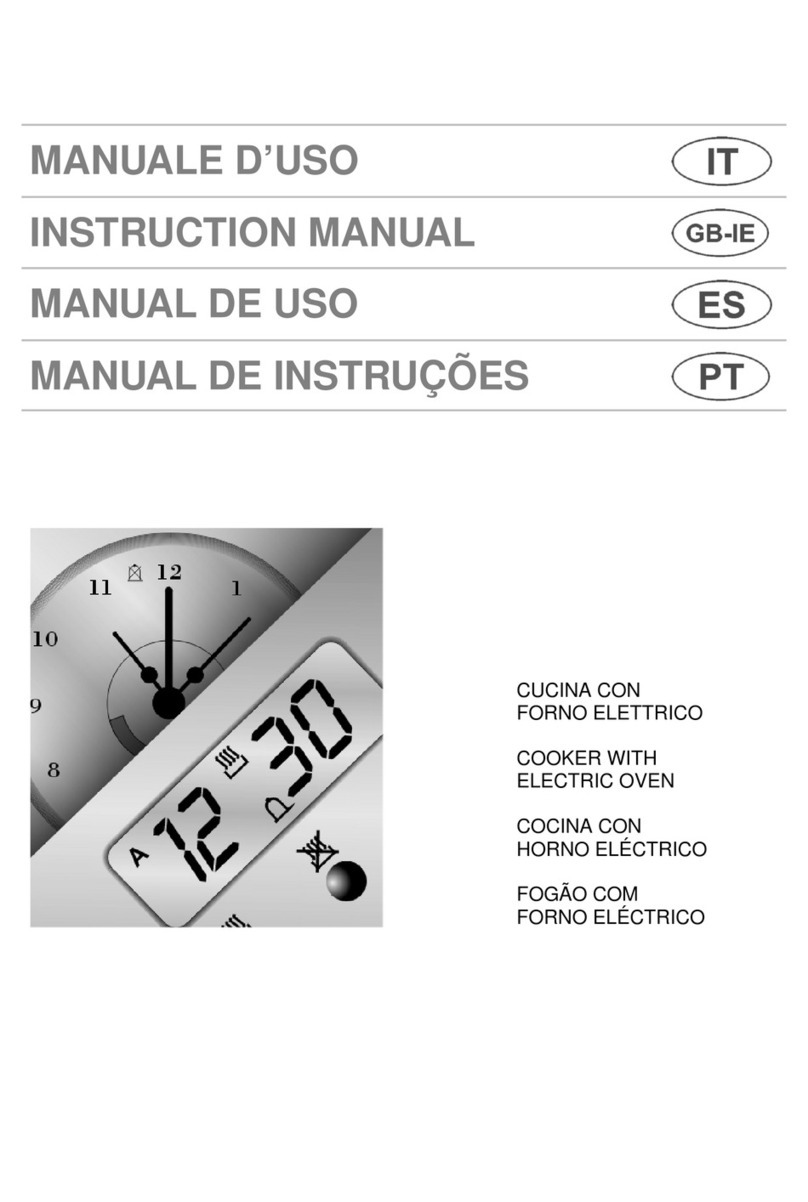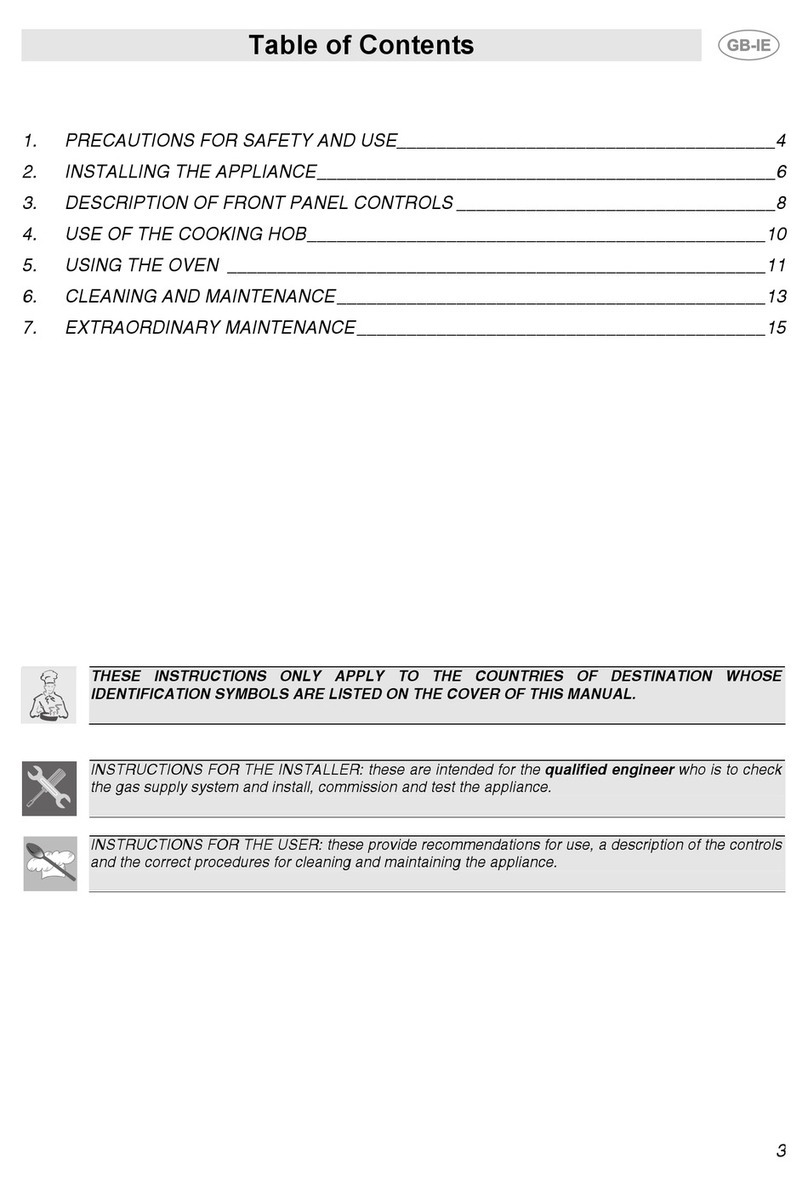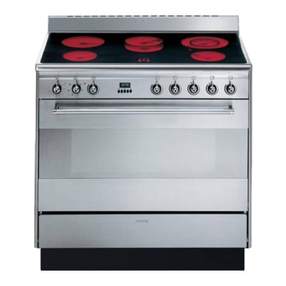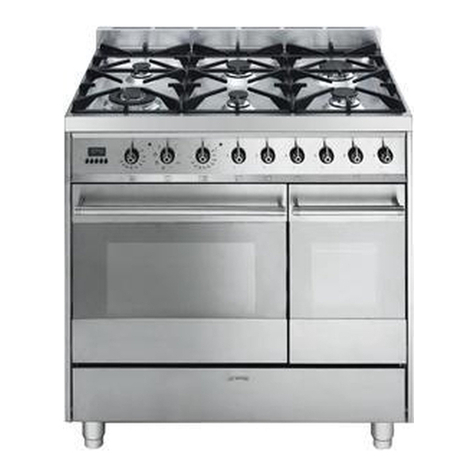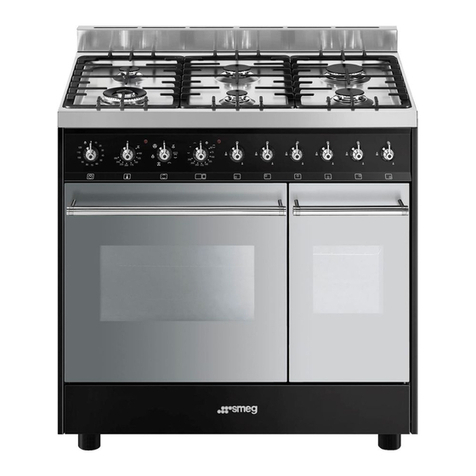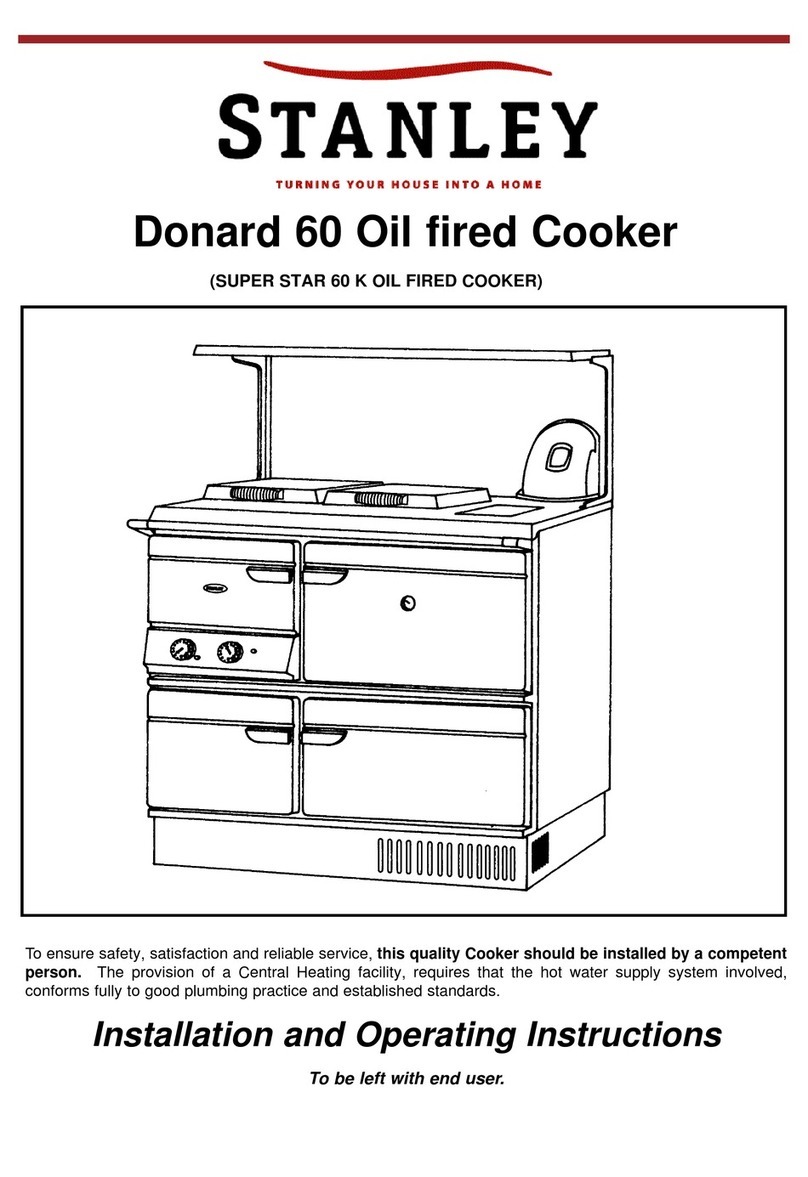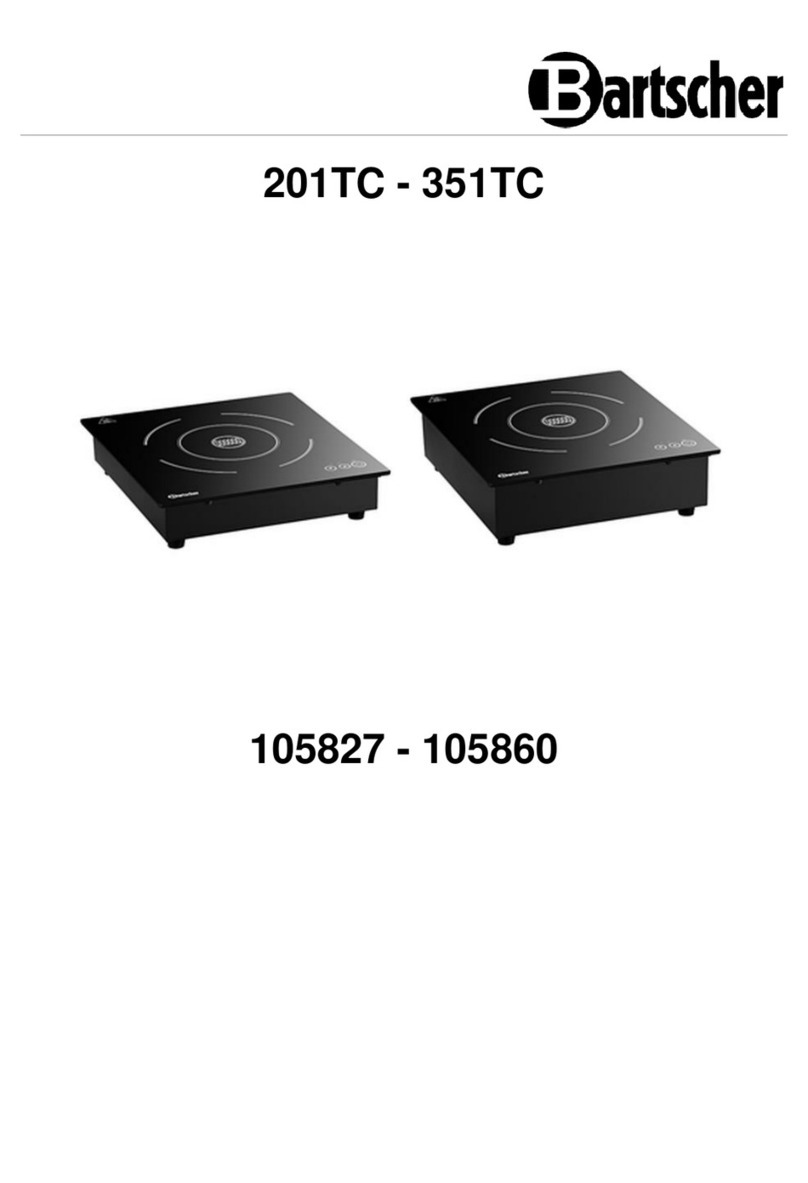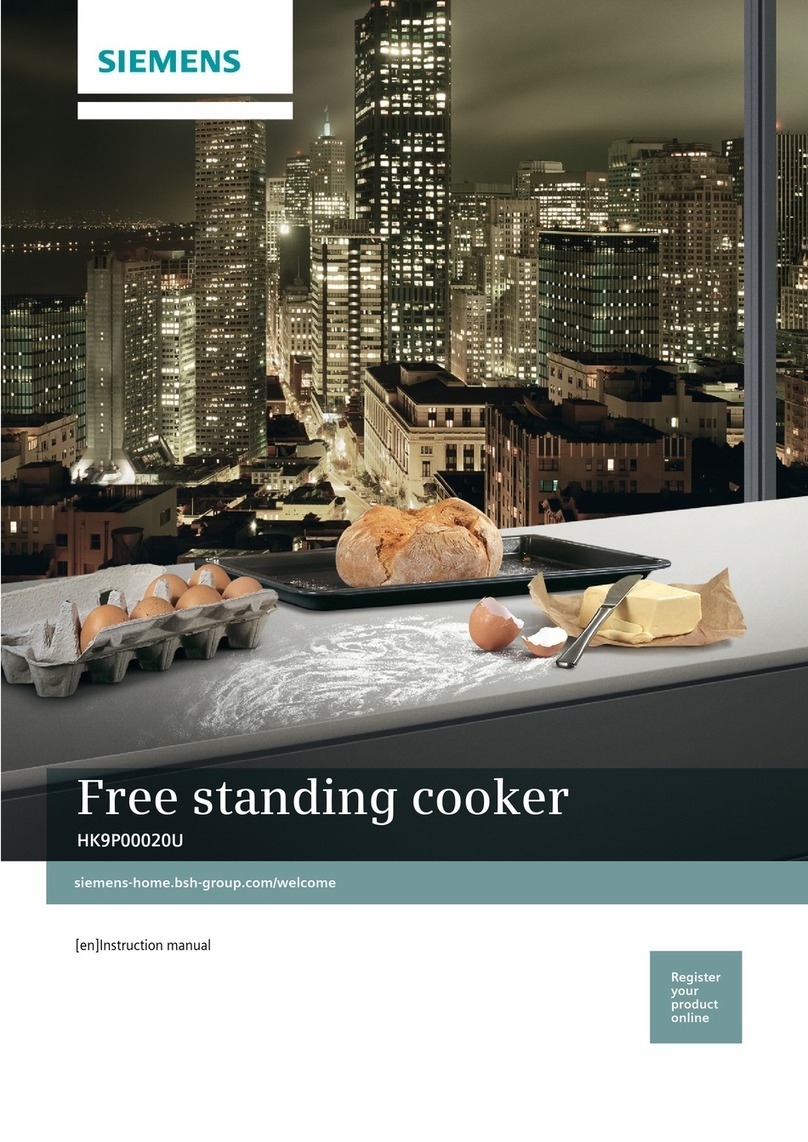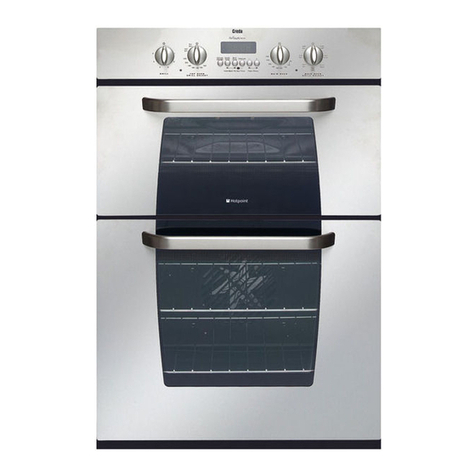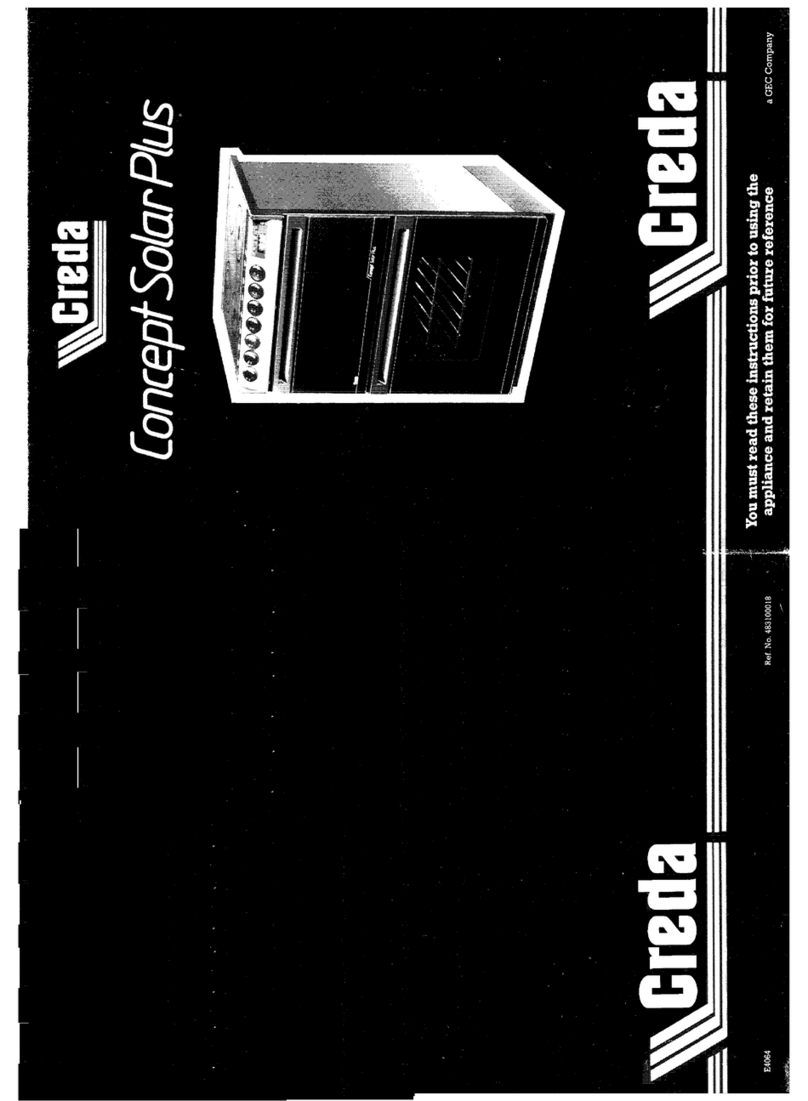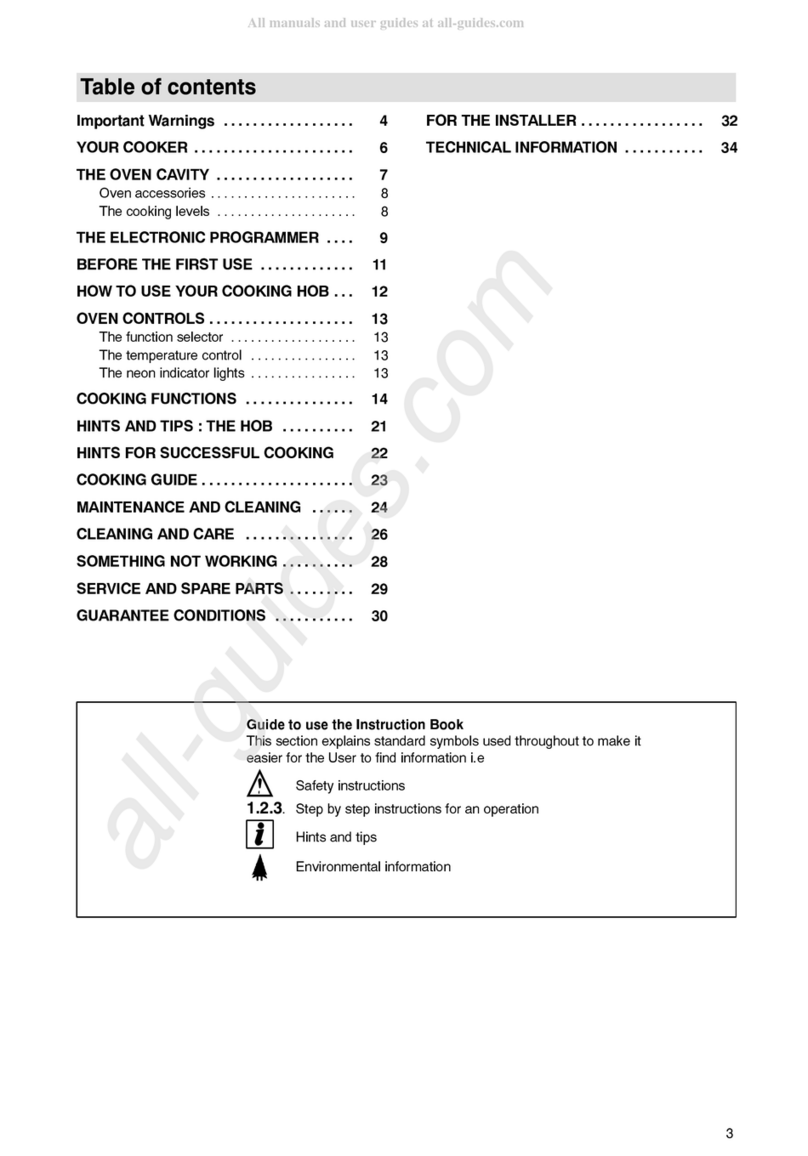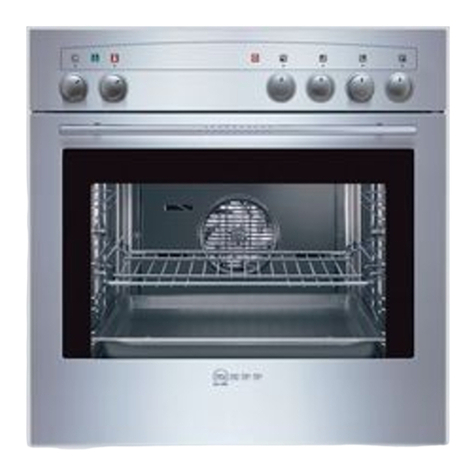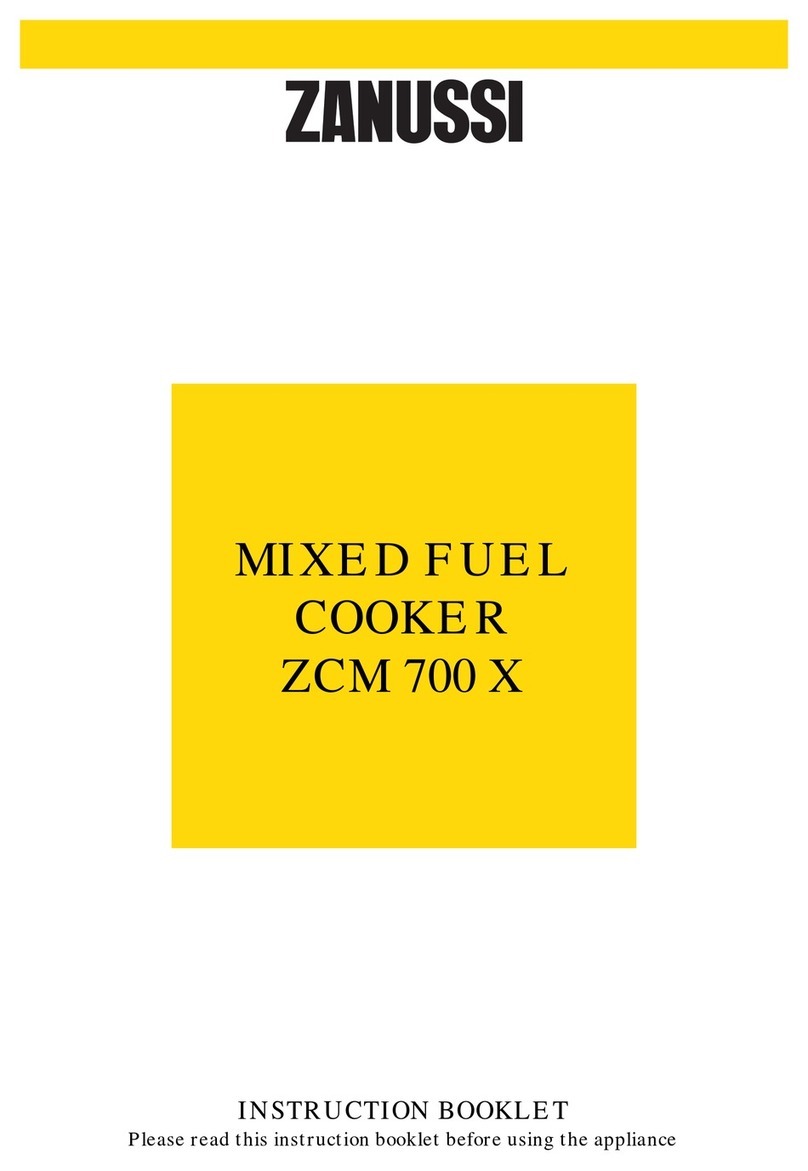
Instructions
7
EN
• Do not use cleaning products
containing chlorine, ammonia or
bleach on steel parts or parts with
metallic surface finishes (e.g.
anodizing, nickel- or chromium-
plating).
• Do not use harsh abrasive
cleaners or sharp metal scrapers
to clean the oven door glass since
they can scratch the surface, which
may result in shattering of the
glass.
• Do not wash the removable
components such as the cooktop
pan stands, flame-spreader
crowns and burner caps in a
dishwasher.
• Never use the oven door to lever
the appliance into place when
fitting.
• Avoid exerting too much pressure
on the oven door when open.
• Do not use the handle to lift or
move the appliance.
Installation
• THIS APPLIANCE MUST NOT BE
INSTALLED IN BOATS OR
CARAVANS.
• The appliance must not be
installed on a stand.
• If this appliance is intalled on a
base, measures must be taken to
prevent the appliance from
slipping form the base.
• Position the appliance into the
cabinet cutout with the help of a
second person.
• This appliance must not be
installed behind a decorative
door.
• The gas connection should be
carried out by authorised persons.
• Installation with flexible hose must
be carried out so that the length of
the piping does not exceed 2 metres
when fully extended as regards
flexible steel hoses and 1.5 metres
in case of rubber hoses.
• The hoses should not come into
contact with moving parts and
should not be crushed in any way.
• If required, use a pressure
regulator that complies with
current regulations.
• After carrying out any operation,
check that the tightening torque of
gas connections is between 10 Nm
and 15 Nm.
• At the end of the installation, check
for any leaks with a soapy
solution, never with a flame.
• Have the electrical connection
performed by authorised persons.
• The appliance must be connected
to earth in compliance with
electrical system safety standards.

